



The red component consists of one copy of the principle component scaled by 1/2 and rotated by 180°, two copies of the principle component scaled by 1/4, and four copies of the dragon scaled by 1/4, with two of them rotated by 180°. The four copies of the dragon form two copies of a twindragon.
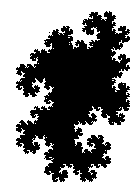



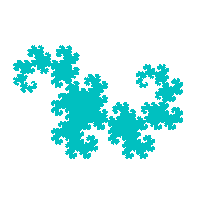
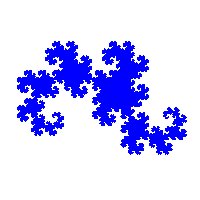
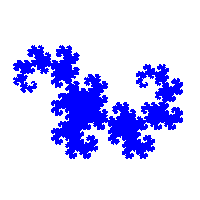
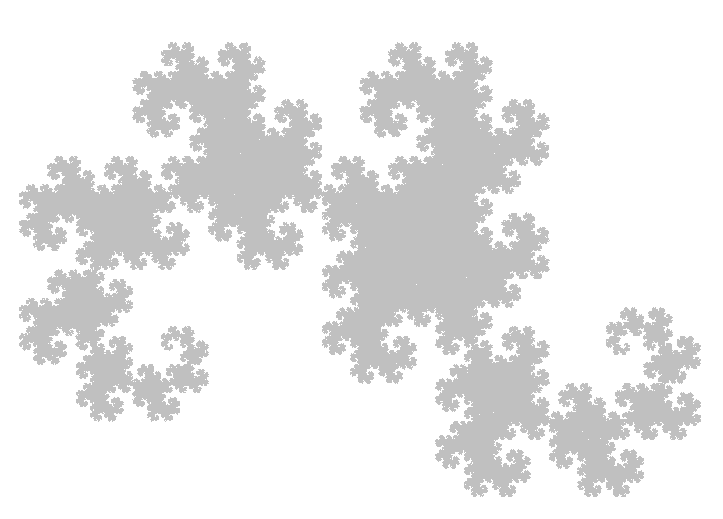
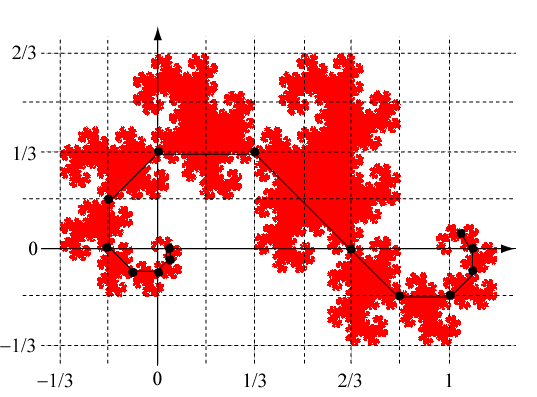
The cut points for the components to the left of the principle component are located at
\[\begin{array}{l} x = \frac{1}{3} \cdot \frac{1}{{{{\sqrt 2 }^{(n - 1)}}}} \cdot \sin \left( {(n + 3) \cdot {{45}^ \circ }} \right) \\ y = - \frac{1}{3} \cdot \frac{1}{{{{\sqrt 2 }^{(n - 1)}}}} \cdot \cos \left( {(n + 3) \cdot {{45}^ \circ }} \right) \\ \end{array}\]for n ≥ 0. For the points in the figure, these are (1/3, 1/3), (0, 1/3), (-1/6, 1/6), (-1/6, 0), (-1/12, -1/12), (0, -1/12), (1/24, -1/24), and (1/24, 0).
The cut points for the components to the right of the principle component are located at
\[\begin{array}{l} x = 1 + \frac{1}{3} \cdot \frac{1}{{{{\sqrt 2 }^{(n - 1)}}}} \cdot \sin \left( {(n - 3) \cdot {{45}^ \circ }} \right) \\ y = - \frac{1}{3} \cdot \frac{1}{{{{\sqrt 2 }^{(n - 1)}}}} \cdot \cos \left( {(n - 3) \cdot {{45}^ \circ }} \right) \\ \end{array}\]for n ≥ 1. For the points in the figure, these are (2/3, 0), (5/6, -1/6), (1, -1/6), (13/12, -1/12), (13/12, 0), and (25/24, 1/24).
You can get a sense of why these cut points arise and where by looking at the 10th iteration of the Heighway dragon starting with the unit line segment from (0,0) to (1,0). In the figure below, where the iteration is superimposed on top of the dragon, the places where the segments do not enclose a complete square are the locations where the cut points will arise in the limit as the number of iterations goes to infinity.
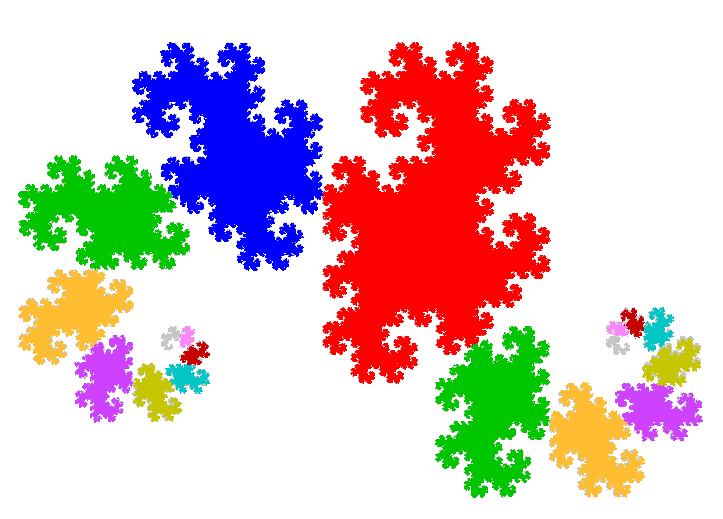
The figures below show how the components continue to repeat as you zoom in (going from left to right, as indicated by the square boxes). Click on each image for a larger view.
Hence A = (2/5)H. The areas of the other components can be found by dividing by an appropriate power of 2.
We know that the principle component of the Heighway dragon consists of 4 copies of the dragon, each scaled by 1/4, by one copy of the principal component scaled by 1/2, and by two copies scaled by 1/4. Looking at the areas of these 7 pieces shows that
\[4\left( {\frac{1}{{16}}H} \right) + \frac{1}{4}A + 2\left( {\frac{1}{{16}}} \right)A = 4\left( {\frac{5}{{32}}A} \right) + \frac{1}{4}A + \frac{1}{8}A = \frac{5}{8}A + \frac{1}{4}A + \frac{1}{8}A = A\]Therefore the seven parts of the principle component must be essentially disjoint.